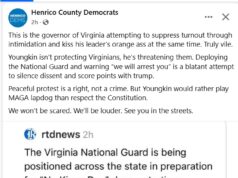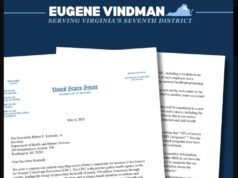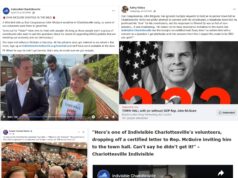( – promoted by lowkell)
Put away your preconceived notions of libertarians; most Sarvis voters have never picked up “Atlas Shrugged” in their life (and save yourself the trouble too, read something enjoyable!). As the dust settles on this Democratic sweep of the Commonwealth, let us take a look at Sarvis voters and what they actually mean.
Voter turnout was up because of Sarvis
2,000,819 Virginians turned out to vote in 2009, including 2,502 who wrote-in a candidate. Turnout was only 42% of active voters. Four years later, 2,240,178 Virginians voted, for turnout of 47%. But turnout with just the two-major party gubernatorial candidates was just 43%. Most of the increase in turnout came from the 145,967 Sarvis voters.
Most Sarvis voters wouldn’t have voted otherwise.
Without Sarvis on the ballot, the race would have been 48% Terry McAuliffe, 46% Ken Cuccinelli, and 5% wouldn’t have voted. Do the math and election day would have been McAuliffe 51%, Cuccinelli 49%. Two and a half times as many Sarvis voters would have gone to McAuliffe over Cuccinelli, but most wouldn’t have voted at all.
Sarvis voters are overwhelmingly white and young.
Not only are Sarvis voters mostly white, a whopping 15% of the 18 to 29 cohort voted for Sarvis. It was also the cohort that McAuliffe improved the least over Creigh Deeds from 2009. What motivated so many younger votes to reject the two party system?
They are independent.
Helping to explain why they would vote for a third-party candidate or not vote at all, most Sarvis supporters affiliated themselves as independent voters, not members of either the Democratic or Republican Party.
More called themselves liberal than conservative, but most are moderates. Among the partisans who backed Sarvis, both liberal Democrats and moderate Republicans were more likely to go with Sarvis.
There were more self-identified Democrats who voted for Sarvis than who voted for Cuccinelli, and most of them would call themselves “liberal Democrats” instead of “moderate” or “conservative” Democrats. On the other side, almost as many self-identified Republicans voted for Sarvis as voted for McAuliffe. They too were more likely to identify as “liberal” or “moderate.”
They are more likely to not be born-again Christians, more likely to believe abortion should be legal, and less likely to approve of the Tea Party.
How’s that for a profile? Over 80% of Sarvis supporters do not identify as born-again Christians. Over 80% believed abortion should be legal. And here’s the big surprise: less than 20% support the Tea Party, while almost half oppose the Tea Party.
They split down-ballot.
Sarvis voters did not uniformly swing to one candidate over another in the LG and AG races, but they did tend to favor Northam over Jackson, and Obenshain over Herring.
White, younger voters who are pro-choice and are not big fans of the Tea Party. They are unhappy with politics as usual and don’t identify with either party. And they were open to voting for both parties down-ballot.
Doesn’t this sound like a prime swing vote to you?
Consider this, Sarvis ran strongest outside of Northern Virginia. As Democrats look to find success beyond Northern Virginia, shouldn’t they look to young, pro-choice voters who are not part of the Tea Party?
Before the election, Lowell made an effort to reveal the wizards behind the Sarvis curtain, the influence of the Koch brothers and others. But for the most part, Terry McAuliffe’s campaign ignored the Sarvis campaign. From my own perspective of the campaign, Sarvis ran as an anti-establishment outsider who opposed the socially intolerant agenda of Cuccinelli while vaguely made references to McAuliffe as a corrupt political insider. These voters were disengaged from the two parties, but not entirely disengaged from the political process–they still voted! Virginia Democrats should find ways to court these sorts of voters, while realizing that they are hardly “libertarian.” Sarvis and the Libertarian Party was the vehicle for their protest, not their ideological brethren.













